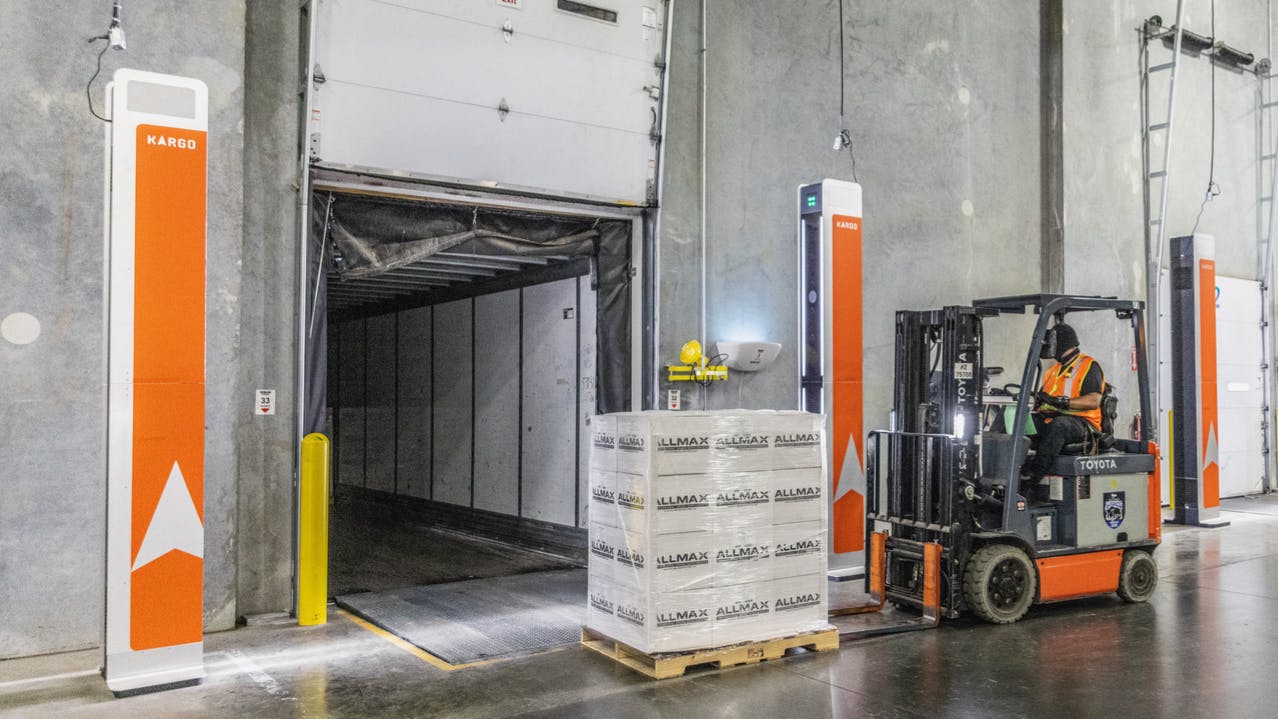Logistics
Edge Computing in Logistics: Everything You Need to Know
| Kargo | 5 min
What You Need to Know




What Is Edge Computing?
Edge computing is an evolving form of computer architecture. It processes data closer to the data’s source, either on edge devices or on nearby servers and gateways.
Technology consultant Gartner names edge computer vision one of the most impactful technologies of 2023. It predicts 25% of supply chain decisions will be made across edge ecosystems through 2025.
Compared to traditional data processing models, edge computing processes higher volumes of data at faster speeds.
Other data processing models typically involve centralizing computing power at a data center or distributing information across a cloud network of remote servers.
In logistics, these other processing models can lead to speed issues, especially in warehouses, distribution centers, or locations with slower network connections. By processing data on the edge, you eliminate network constraints.
You can also process more signals on the edge. In warehouses, for example, computer vision extracts data about the full environment, including people, forklifts, dock doors, pallets, labels, and more.
This data is used to automate shipping and receiving at loading docks.
As freight passes the docks, Kargo inspects for damage, verifies shipments against bills of lading, and updates existing inventory systems.
In order to achieve this, Kargo processes more than three gigabytes (GB) per second of vision and other sensor data per loading dock door. In layman’s terms, 3GB of data is approximately 1500 smartphone photos or up to 500 pop songs.
Processing that much data in a single second is only possible with edge computing.
It’s also key to meeting the on-time and accuracy demands of today’s supply chains. If you were to rely on a centralized data center at average internet speeds, it could take up to 15 minutes - far too slow to keep shipments moving smoothly.
For more on how edge can improve your logistics, reach out to go@mykargo.com
Definitions



Why Do We Need Edge Computing?
We need edge computing because of the massive demand for high-speed data processing.
In logistics, edge is how we provide shipment activity data to platforms in real time. It’s how Kargo flags exceptions at loading docks before mistakes become costly.
But what is real time? The unspoken truth is the timing of real time may vary. The closest we have to an industry-standard definition is “before it’s too late to take action.”
For example, when shipments cross oceans, you may need to provide additional documentation before a vessel hits port. But it may be the next business day before you find out – and you may have days to fix the issue, anyway.
At the warehouse level, the action is much faster. When loading pallets onto a truck, warehouse staff may have minutes to confirm accuracy across hundreds of pallets before the truck leaves.
Even catching an error after a pallet is loaded can increase dwell time. No one wants to unload and reload to get to a pallet in the front of the trailer.
This means the most optimal opportunity to ensure complete accuracy is when a pallet passes the dock door and is loaded onto the truck, but before the next pallets are loaded. That leaves seconds to extract data from the environment, process it, and flag any errors.
In these cases, real time needs to get as real as possible. Edge computing makes it happen.
How Does Edge Computing Work in Logistics?
There are several use cases for edge computing in supply chain and logistics.
All of them rely on the speed with which data can be processed and delivered. This enables companies to control cost and multiply productivity at key points in the supply chain.
Some examples include:
- Tracking inventory in warehouses to avoid shrinkage and stockouts
- Tracking vehicles for performance, route optimization, and fuel efficiency
- Integrating robotics into warehouses or distribution centers for picking
- Predictive maintenance of hardware or other equipment before things break
Different use cases require processing different kinds of data.
A simple example is GPS. A truck driver may need to know which route to take to a yard or warehouse. For them to make it on time, data inputs would include driving speed, distance, and traffic congestion to deliver outputs like where to turn next.
If the data isn’t processed quickly enough, the driver might miss a turn or get caught in a traffic jam — a relatable scenario for most of us.
Use cases can involve complex computation, too. For Kargo to deliver real-time performance, data processing includes the following:
- Full perception and tracking of dock doors, forklifts, people, and shipments
- Reading, translating, and structuring data from labels and other marks
- Fusion of images from different sources to ensure label accuracy
- Efficient communication with cloud networks for delivery to platforms
First, computer vision captures highly detailed information about the loading dock environment. If a human eye can see it, Kargo captures it.
Kargo Towers “see” from approximately 3 inches off the ground to up to 12 feet high and up to 10 feet away, including fine print on labels down to a font size of approximately 9 points.
This happens while pallets are moving on forklifts at an approximate speed of five miles per hour.
The amount of continually changing detail is why data processing volumes are so high and why we need edge computing.
These capabilities represent a crucial evolution for supply chains. By handling extraordinary volumes of data, edge provides the industry with actionable information, just as it’s needed.
As edge computing evolves, its benefits will continue to deliver impacts at levels we haven’t experienced before. The companies that integrate its power into their tech mixes now will be the ones to dominate their markets in the coming years.
Gain More Insight with Kargo
Questions?
Connect With us
Ask us anything or drop your email to stay in touch




